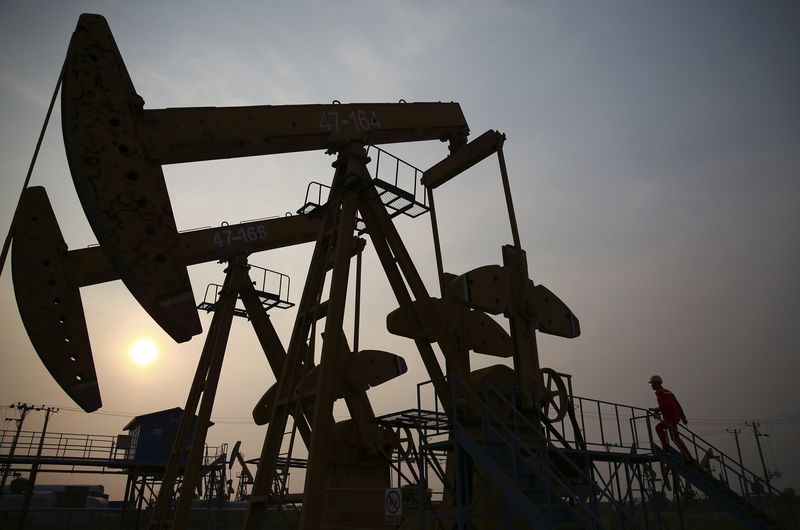By Peter Nurse
Investing.com -- Crude oil prices climbed Tuesday, rebounding after hitting a three-week low in the previous session, but gains are limited amid concerns over oil demand as a result of enhanced Covid-related restrictions.
By 9:40 AM ET (1340 GMT), U.S. crude futures were up 1.5% at $67.45 a barrel, while Brent futures were up 1.2% at $69.87 a barrel. Both contracts dropped around 2.5% on Monday, having last week recorded their biggest weekly loss in four months.
U.S. Gasoline RBOB Futures were up 1.4% at $2.2655 a gallon.
Covid-1i cases are on the rise in a number of countries in southeast Asia, Australia and the U.S., but it’s the expansion in China, the world's second-largest oil consumer, which is causing most concern.
China reported a record number of daily Covid-19 cases on Monday, and the restrictive measures have already been implemented in large parts of the country are dampening the fuel demand outlook.
That said, crude prices are still up just under 40% this year, helped by the relatively cautious approach the Organization of the Petroleum Exporting Countries and allies, a group known as OPEC+, have adopted in terms of bringing supply back onto the market.
“While it is unlikely that the recent market weakness will see OPEC+ react, further weakness could see the group become increasingly concerned,” said analysts at ING, in a note.
The next meeting is scheduled for the start of September, and “if we get to this meeting and there has been further price weakness, there is the real possibility that we see the group go back on their easing plan,” ING added. “It is for this reason that we believe that any downside in oil prices is fairly limited.”
Elsewhere, Libya’s National Oil Corporation stated Tuesday that an oil pipeline leak is set to lower the output from its Gallo oil field by 70,000 barrels a day
The industry body, the American Petroleum Institute, is scheduled at 4:30 PM ET to release its weekly U.S. crude supply data later Tuesday, while before that, at 12 PM ET, the EIA will release its Short-Term Energy Outlook.
